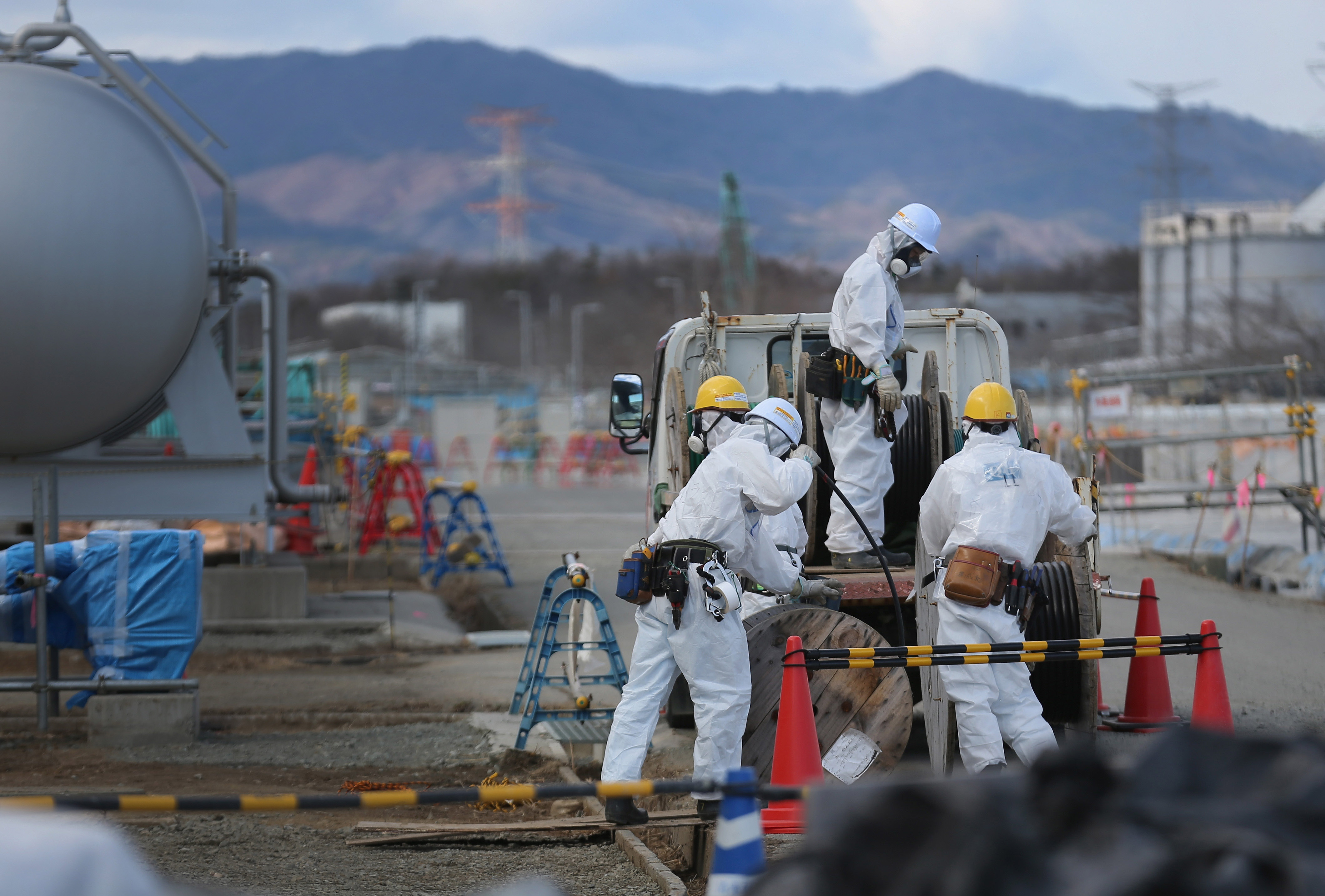A weekly newsletter for Pacific Standard Premium members.

(Photo: The Voorhes)
Your Five Essential Reads
A rundown of five of our most important and timely stories from the past week.
- Grizzly bears are an iconic species in California. A bear is featured on the state flag, they are the mascot for multiple state universities, and have a long lineage in the lore of California’s native peoples. Yet, shortly after Europeans began flooding the state looking for gold and agricultural riches, the bear was hunted to extinction. Now, as writer Jeremy Miller reports in our June/July cover story, there are conservationists who believe it’s time to return the proud animal to the wilds of California. Read Miller’s story here.
- In another feature from our June/July issue, writer Ben Goldfarb joins the crew of the vigilante environmental justice group Sea Shepherd as they fight to save the small, shy vaquita porpoise from extinction. Goldfarb traverses the Gulf of California onboard the SSS Sam Simon witnessing local fishermen thumb their nose at conservation law and the sometimes non-existent response of the Mexican navy to these violations. In the end, the question remains: Does the vaquita have any hope of survival? Read Goldfarb’s piece here.
- The Paris climate conference was received with much fanfare and excitement after it produced the world’s first global climate agreement. But in the years since, many of the goals set by the accords haven’t been met and the United States has pulled itself out of the accords entirely. Eric J. Lyman—who has been covering climate negotiations since 2000—asks if these negotiations are still effective means of enacting eco-friendly reforms. The message is a bit ominous. As the former top United Nations climate change official Yvo de Boer says to Lyman: “There’s a curb of usefulness these things go through, and after a certain point they can lose their purpose.” Read the story here.
- As a result of a Freedom of Information Act request by contributing writer Jimmy Tobias, Pacific Standard was able to obtain government records that reveal that a top official at the Department of the Interior had a hand in nixing a government-funded public-health study in Appalachia—after a series of meetings with some of the most powerful mining players in the country. Read Tobias’ story here.
- This week saw two aggressive moves by the Trump administration to dissuade asylum seekers from coming to America. First: It enacted a rule change allowing the Department of Homeland Security to review the immigration status of potential sponsors of unaccompanied minors who enter the U.S. without papers—and to use that information to deport those people, possibly costing unaccompanied minors a place to stay. Second: Attorney General Jeff Sessions prohibited immigration judges from granting asylum status to domestic abuse and gang violence survivors. Contributing writer Massoud Hayoun reported on both of these issues this week, speaking with immigrant advocates and representatives from the government. Read the unaccompanied minors story here and the Sessions story here.

(Photo: Christopher Furlong/Getty Images)
Obama’s Science Adviser on Responding to the Fukushima Nuclear Accident
Last month, Pacific Standard Staff Writer Francie Diep interviewed former Obama presidential science adviser John Holdren in Washington, D.C. During their conversation, Holdren told Diep about when the White House learned that a nuclear power plant in Fukushima, Japan, had suffered a meltdown following a devastating earthquake and tsunami.
At about noon on Friday, March 11th, Washington time, radiation levels at the Fukushima Daiichi power plant were reported to be rising. At 4:45 p.m., the Tokyo Electric Power Company reported radioactive material may have leaked. As a plasma physicist, Holdren took the lead on organizing the United States’ response. This story was not included in the original interview, and is available here exclusively for Pacific Standard premium members. You can read the rest of the interview here.
Below is Holdren’s telling of how the U.S. assisted in developing a coordinated multinational response to the disaster:
Francie Diep: So, you wake up, you learn from the news the Fukushima disaster happened….
John Holdren: We learned about two o’clock in the afternoon, by communication from the U.S. ambassador to Japan, that this was underway.
[President Barack] Obama immediately convened his senior team in the Situation Room and he had the ambassador on the screen. We had a brainstorming session about what ways that the U.S. could help. It went from a little after two in the afternoon to a little after 11 at night and then I went home. At five after midnight, the phone rings and it’s the Situation Room saying, “We’re going to continue this afternoon’s discussion by conference call, starting in 10 minutes.”
I was in touch with the chairman of the Japanese Atomic Energy Commission by Saturday midday, by phone. By Saturday, Steve Chu and I—Steve Chu was the secretary of energy at the time—were in the process of setting up an advisory body of the country’s leading experts on controlling reactor accidents, whether they were in industry, government, or universities. That panel met every day for, typically, two hours, for the next three or four weeks, brainstorming ways to deal with this accident. Then, virtually every night, we would be in touch by phone with the leaders of the Japanese efforts, to share our latest ideas and to get their latest reports on what was going on. So the degree of connectedness was very high.
Diep: What were the major ways the U.S. government aided in the Fukushima response?
Holdren: One was sharing a lot of insights about where the vulnerabilities are once the accident was underway and what could be done to minimize the danger. No. 2, working on the question of where the radioactivity was going and what doses could be delivered to people in different places. One of the things we very quickly figured out was that Tokyo was not in danger and that it was not necessary, therefore, to evacuate the U.S. embassy or to issue an order for other American citizens in Tokyo to leave.
We had a long interaction with the Japanese about exclusion zones and where the plume was going. We had better models than the Japanese did. We also provided robots that were designed to operate in a high-radiation environment, which the Japanese did not have. We sent them over. They sat in Japanese customs for a week while customs authorities argued about whether this didn’t violate Japanese laws against importing U.S. robots because Japan was trying to protect its competitive position in robot development. So some strange things happened.
A U.S. nuclear-powered aircraft carrier was only about 50 kilometers off the Japanese coast when this happened and in that first video conference with the U.S. ambassador, the ambassador said the Japanese would like our permission to use the USS Ronald Reagan to land Japanese rescue helicopters and refuel them because the aircraft carrier was much closer to the scene than any other place that the helicopters could go to get refueled and reprovisioned. There was a discussion in the Situation Room about this. … Within two hours of that meeting, the vice chairman of the joint chiefs sent an order from the Situation Room saying, “Make it so.”

(Photo: Buda Mendes/Getty Images)
PS Picks
PS Picks is a selection of the best things that the magazine’s staff and contributors are reading, watching, or otherwise paying attention to in the worlds of art, politics, and culture.
Ken Bensinger Shows FIFA a Red: The 2018 FIFA World Cup is already in full swing. Group play matches began in earnest on Thursday for what is often proclaimed to be the biggest sporting event in the world. But beneath the glamour of the sporting spectacle lies a tangled, insidious web of corruption, corruption that has soaked itself so deep into the very fabric of world soccer that it’s unclear if FIFA can ever truly be fixed.
BuzzFeed’s Ken Bensinger’s new book Red Card: How the U.S. Blew the Whistle on the World’s Biggest Sports Scandal, attempts to unravel the seemingly endless knots of graft and cheating that exist throughout the alphabet soup of acronymic organizations that run the game on all levels. One would be forgiven, even if they follow soccer assiduously, with not being familiar with names like CONCACAF, CONMEBOL, CFU, and so on—it’s a difficult move that Bensinger has to make here. He has to forge a cogent narrative around what is intentionally a labyrinthine organization. After all, one of FIFA’s most notable attributes for maintaining this corruption is making it difficult for those outside the halls of power to understand how, exactly, the whole damn thing works.
But Bensinger overcomes this hurdle with clean narrative prose and a smart structure. By following the investigation led by a team of Federal Bureau of Investigation and Internal Revenue Service agents, along with New York district attorneys, he creates a pleasing alchemy of driving plot complemented by in-depth explanations of how money exchanges hands for advertising deals, never-completed developmental projects, and bribes—for just about everything FIFA-related. It’s like reading a true crime book about the mafia, which makes sense, considering the prosecutors in the FIFA case often compared the organization to La Cosa Nostra.
Perhaps the biggest hurdle is making it clear why people should care about a few soccer officials getting rich on FIFA dollars. But the executives who lined their pockets with corrupt cash didn’t just take from the big money advertising agencies or the Qatari natural gas barons, but, as Bensinger outlines, used money that should have gone to developing the game in small countries like Curacao, Trinidad, or Bolivia—buying cleats and balls for kids, building new fields, etc.—and used it for personal gain. The corruption has not stopped since the investigation, but Red Card illustrates why it’s important that we don’t forget why it must not be shoved under the carpet.
—Ian Hurley, Assistant Editor
PS in the News
A look at where our stories and staff surface in the national conversation.
- Jeremy Miller’s story about bringing the grizzly back to California was included in the California Sun newsletter.
- Ben Goldfarb’s piece about the vanishing of the vaquita in the Gulf of California made it to the top spot on Digg.
- Twenty years ago, James Byrd Jr. was the victim of a heinous lynching in Jasper, Texas. Writer John Savage went to the town recently and his story was included in the Marshall Project‘s daily newsletter.
- Can auditing research projects fix science’s reproducibility crisis? Dalweet Singh Chawla’s look at this problem, and a potential solution, was included in Retraction Watch’s weekend reads.
The Conversation
Reclaiming Stone Mountain From the Alt-Right (February 2018)
- This is great—kudos to PS, and gratitude to Shannon. I grew up, much like Shannon, quite close to Stone Mountain. It was a fixture in my youth; I have many fond memories of visiting and climbing there, but those are complicated by its ugly history (and, ugh, I guess parts of its present as well). —Coco Keevan
An Obama-Era White House Official Breaks Down the Current State of Immigration Policy (PSmag.com, June 13th)
- Peter Boogaard, [Barack] Obama’s former Department of Homeland Security spokesman on immigration policy conveniently faded away from explaining what led to the housing of immigrant children in cages during the eight years of Obama administration (contrasted by the first 500 days of the Trump administration). He does a good job of “poisoning the wells” for [Donald] Trump. The stage is set that Obama loved immigrants and immigration, whereas, according to Boogaard, Trump believes in criminalizing immigrants. So, as they say on stage, “what an introduction.” —David
Are the Feds Cherry-Picking Data to Force Pipelines Through Vulnerable Communities? (PSmag.com, June 7th)
- The poor always are targeted by corporate greed to spread its destruction because they don’t have the money or means to fight back. That’s why it is so important to donate to groups such as Sierra Club, Earth Justice, and the Southern Environmental Law Center, which do! —Slavin Rose
If you have any thoughts about this newsletter or our work—what you like/didn’t like/want to see more of—you can reach us at premium@psmag.com. If you’re not already, become a premium member by following the button below. As we continue to build out the benefits of a premium membership to Pacific Standard, we want to hear what would be most valuable to you.





